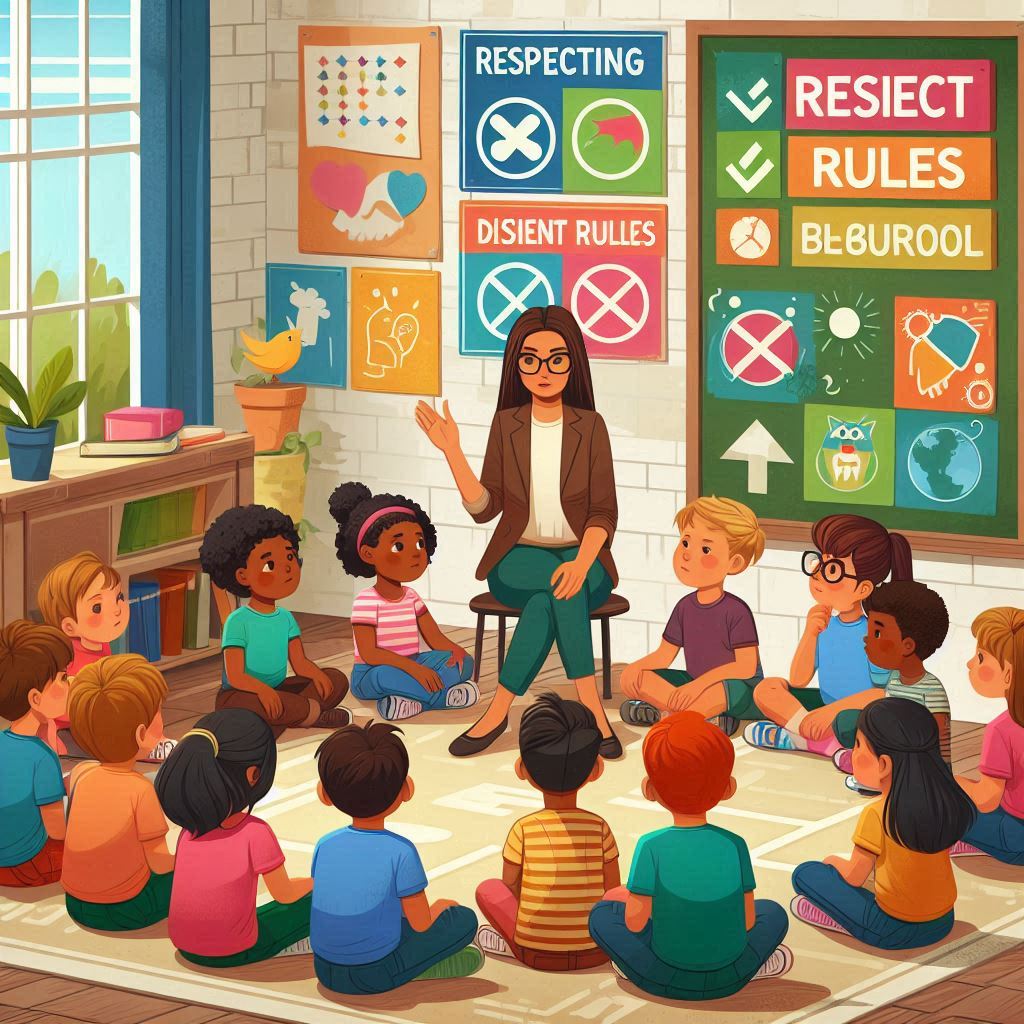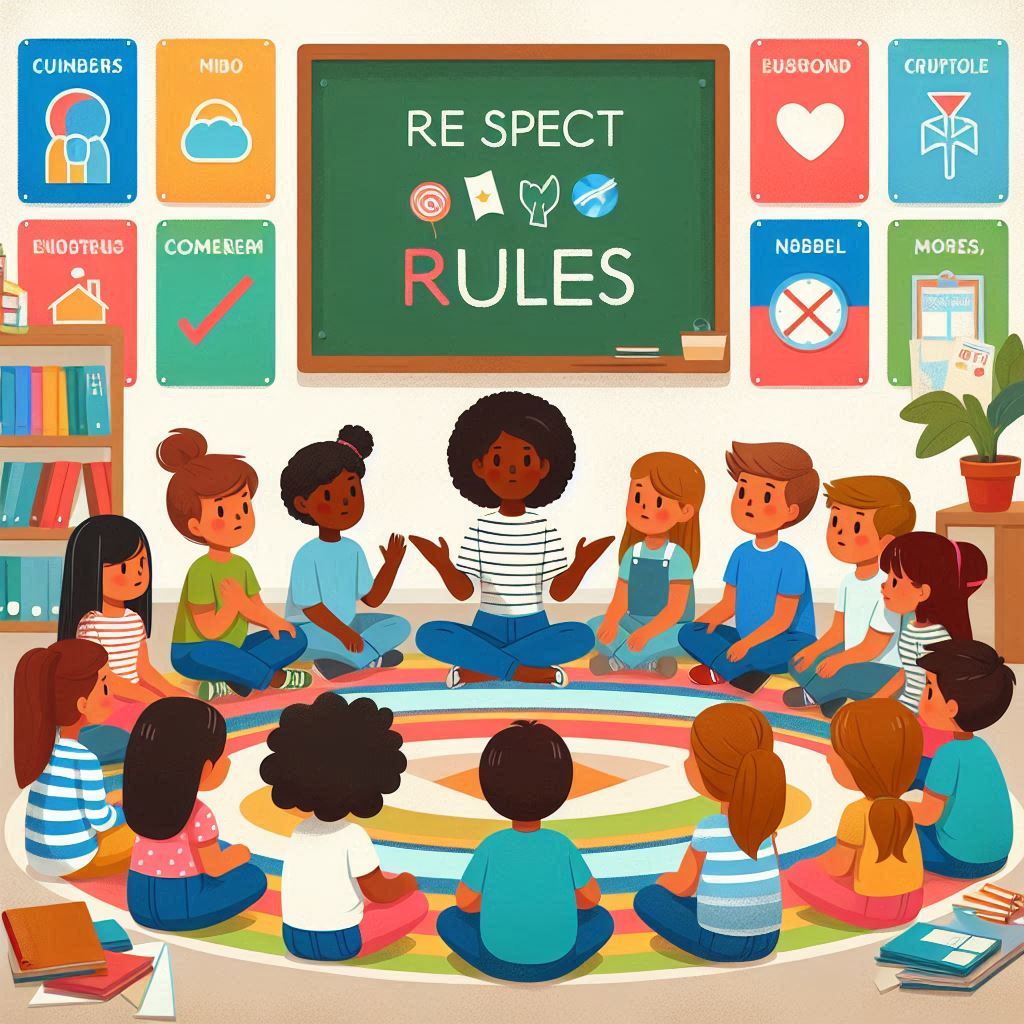Teaching children to respect rules is a crucial aspect of parenting, but many parents find themselves wondering how to do so without resorting to strict punishments. Punishments, especially harsh ones, may sometimes seem like the quickest way to enforce discipline, but they can lead to fear and resentment rather than genuine understanding of why rules exist. Instead of fear-based methods, positive discipline techniques encourage children to respect rules out of mutual trust and understanding.
In this article, we will explore effective methods to teach children to follow rules while building respect, empathy, and self-discipline—without relying on strict punishments. These methods focus on developing an environment of cooperation, communication, and shared responsibility. The aim is to guide children toward understanding the importance of rules and to help them internalize respectful behavior that lasts a lifetime.
1. Lead by Example
Children learn by observing the actions and behaviors of adults, particularly their parents. If you want your child to respect rules, it’s essential that they see you following them too. Whether it’s house rules, traffic laws, or social manners, children notice how adults behave and often mimic these behaviors.
- Model Respect for Rules: If you consistently show respect for rules and explain why you follow them, your child is more likely to do the same. For example, if the family rule is “no phones during dinner,” parents must also follow this rule.
- Demonstrate Problem-Solving: When faced with a situation where you are tempted to break a rule, talk through your decision-making process. This helps your child understand that following rules is not just an obligation, but also a conscious, responsible choice.
By modeling this behavior, you teach your child that rules are in place for a reason and that they apply to everyone equally. This sets the foundation for mutual respect rather than an authority-driven dynamic.

2. Involve Your Child in Rule-Making
One way to encourage children to respect rules is to involve them in the rule-making process. When children have a voice in creating the rules, they are more likely to understand their purpose and feel a sense of ownership over them. This approach fosters cooperation rather than rebellion.
- Family Meetings: Hold family meetings where everyone, including the children, discusses and agrees on the household rules. Give children the opportunity to suggest rules they think are important and explain why certain rules already exist.
- Explain the “Why”: Children are more likely to respect rules when they understand the reason behind them. For example, instead of simply saying, “Don’t touch the stove,” explain, “The stove is very hot, and you could get hurt if you touch it.”
By including children in these discussions, they learn that rules are not just arbitrary restrictions but guidelines designed to keep them safe and help the household run smoothly.
3. Use Positive Reinforcement
Positive reinforcement is a highly effective way to encourage respectful behavior. Instead of focusing solely on punishment for breaking rules, reward your child when they follow the rules. Positive reinforcement helps children associate good behavior with positive outcomes, making them more likely to repeat it in the future.
- Praise and Encouragement: Whenever your child follows a rule or behaves respectfully, give them praise and encouragement. Be specific with your praise, such as, “I really appreciate how you cleaned up your toys without being asked today!”
- Reward Systems: You can create a simple reward system, such as a sticker chart or tokens that can be exchanged for small treats or privileges. The goal is to make following the rules something children are motivated to do because they feel proud of themselves and receive positive attention.
Using positive reinforcement shows your child that their good behavior is noticed and appreciated, which builds self-esteem and encourages them to continue following the rules.
4. Provide Clear and Consistent Expectations
Children need clear and consistent expectations to understand what is expected of them. When rules are vague or inconsistently enforced, it becomes difficult for children to know how to behave. This lack of clarity can lead to confusion and frustration.
- Be Clear and Specific: Make sure that rules are easy to understand. Instead of saying, “Behave at the dinner table,” specify what this means: “Please sit still, use your utensils properly, and talk politely.”
- Be Consistent: Consistency is key to teaching respect for rules. If the consequences for breaking a rule change frequently, or if one parent enforces rules while the other does not, children may not take the rules seriously. It’s essential for both parents or caregivers to agree on the rules and follow through with consistent responses.
When children know exactly what is expected and that these expectations won’t change arbitrarily, they feel more secure and are more likely to follow the rules.

5. Teach Empathy and Perspective-Taking
Helping children understand how their behavior affects others can be a powerful way to teach respect for rules. When children develop empathy, they are more likely to respect rules because they understand how these rules protect the well-being of others, not just themselves.
- Ask Thought-Provoking Questions: When discussing a rule, ask your child how breaking it might impact others. For example, if they refuse to clean up their toys, ask, “How do you think it would feel if someone tripped over your toys and got hurt?” These questions help children see the broader impact of their actions.
- Role-Playing: Engage your child in role-playing scenarios where they play the part of someone affected by the rule. For example, have them pretend to be a teacher enforcing classroom rules or a sibling who benefits from a shared family rule.
Teaching children to consider others’ feelings fosters empathy and makes them more likely to respect rules because they understand the consequences of breaking them on those around them.
6. Offer Choices and Autonomy
Children are more likely to follow rules when they feel they have some control over their environment. Instead of enforcing rules with a “my way or the highway” mentality, offer children choices within boundaries. This gives them a sense of autonomy while still respecting the structure of the rules.
- Provide Limited Choices: When possible, give your child options that still align with the rules. For example, if the rule is that toys must be picked up before bed, you could say, “Would you like to clean up now or in 10 minutes?” This allows them to have a say in the timing while still ensuring the rule is followed.
- Encourage Responsibility: Give your child some ownership over how they follow the rules. Let them come up with their own solutions to problems, such as how they will remember to do their chores on time. This teaches problem-solving skills and increases their investment in respecting the rules.
By offering choices and giving your child autonomy, you are teaching them that following rules doesn’t mean they have no control over their lives. It encourages self-discipline and decision-making.
7. Teach Natural Consequences
Rather than using strict or arbitrary punishments, teach your child about natural consequences—the outcomes that naturally occur as a result of their behavior. Natural consequences help children see the direct results of their actions without feeling like they’re being unfairly punished.
- Explain the Natural Consequence: When a child breaks a rule, explain what will happen as a result of their actions. For example, if they don’t put away their toys, they may not be able to find them later when they want to play. If they refuse to wear a coat outside, they might feel cold.
- Allow the Consequence to Happen: As long as the consequence is safe, let your child experience the outcome of their actions. This is often a more effective way to teach responsibility than a strict punishment. They’ll begin to understand that rules exist for their own benefit.
Natural consequences teach children to connect their behavior with real-world outcomes, helping them internalize the importance of following rules without feeling forced or controlled.
8. Stay Calm and Use Gentle Discipline
When children break the rules, it’s essential to remain calm and use gentle discipline techniques. Reacting with anger or strict punishments can lead to power struggles, making it harder for children to respect rules in the long run.
- Use Calm Communication: When addressing rule-breaking behavior, speak calmly and respectfully. For example, instead of yelling, “Why didn’t you clean your room?” you can say, “I noticed your room is still messy. Let’s work together to get it cleaned up.”
- Focus on Problem-Solving: Instead of focusing on what your child did wrong, work together to find a solution. For example, if they missed their curfew, discuss what they can do next time to ensure they get home on time, such as setting an alarm or calling for a ride earlier.
Using calm, gentle discipline helps your child see rule-following as part of a collaborative effort rather than something forced upon them through fear or anger.
9. Explain Consequences Before Rules Are Broken
Sometimes, children break rules simply because they don’t know what the consequences will be. It’s important to clearly explain what will happen if a rule is broken, so they can make informed decisions.
- Set Clear Expectations Upfront: Before an activity or event, remind your child of the rules and what the consequences will be if they don’t follow them. For example, “If you hit your brother, you won’t be able to play with him for the rest of the afternoon.”
- Discuss Consequences During Calm Moments: Make sure to talk about consequences during calm moments, not just when a rule has already been broken. This ensures that your child understands what’s at stake without feeling overwhelmed by emotions.
When children know the consequences in advance, they’re more likely to make conscious decisions about their behavior, which leads to greater respect for the rules.

Teaching children to respect rules without using strict punishments is a gradual process that requires patience, consistency, and empathy. By using positive reinforcement, providing clear expectations, involving children in rule-making, and modeling respectful behavior, parents can guide their children toward understanding the importance of rules.
The goal is not to control or force obedience but to foster an environment where children internalize respect for rules because they understand their value. This approach not only helps children become more respectful and responsible but also strengthens the parent-child relationship, built on trust and mutual respect rather than fear or punishment.
